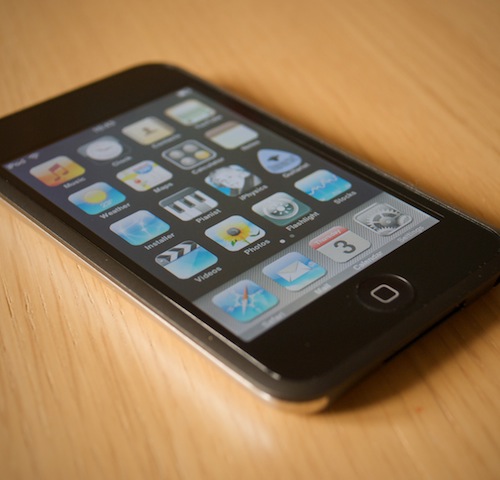Have your kids started to make their Christmas lists yet? As Black Friday approaches here in the US (as well as Cyber Monday for online retailers), it may be tempting to snap up that iPod touch® your kid has been begging for. After all, they’re great gateway gifts for kids, tweens, and teens. They offer the technology of an iPhone without the big data plan. So kids can play games and take photos with a much less expensive device.
And that means they can’t use it to go online, right?
Wrong. Many parents fail to realize that iPod touches (and, for that matter, iPads and other tablets) are WIFI-enabled. Kids can still browse the web on Safari. In fact, if their parents haven’t enabled the iOS7 filter (or have done so without setting up a passcode), kids can even enable private browsing and clear their browser history.
So does handing your child an iPod touch guarantee they’ll be hooked on porn for life? Of course not. And certainly these devices have a lot of good to offer. However, before your child unwraps one on Christmas morning, you’ll want to take the time to configure the device to make sure your kids stay safe online.
1. Set a family device policy
Parenting 101 says that computers should be kept in a public place. It’s not a perfect system, but it makes it easier to spot when your child is intentionally trying to hide something. The same should hold true for your child’s iPod touch. At the bare minimum, you should set the rule that they are not allowed to keep an Internet-enabled device into their bedroom at night. Do they use their iPod touch as an alarm clock? Buy them one from the store. (You should probably lead by example on that one.)
You may also want to consider enforcing the policy that you may—and will—look through the iPod touch at any time. It may feel like an invasion of privacy, but it’s your job to keep them safe.
2. Set restrictions
Apple has built the ability to restrict certain music, movies, and apps. While you may not care about most of the games your child wants to download, enabling restrictions will prevent them from downloading that swimsuit model app you most definitely don’t want them to use.
We’ve got a full walkthrough of setting restrictions here, but one tip about setting a passcode: make sure it’s not something easily guessable. At some point, your kids will try to test their boundaries, which will likely include an attempted guess at the passcode. Your kids know your birthdate and your street address, so those are probably not the best choices.
3. Set up the built-in filter
One of Apple’s breakthroughs with the release of iOS 7 was the addition of a built-in filter. There are two main settings: the first blocks “adult” content, and the second allows only those sites which have been added to a whitelist. Both settings prevent private browsing in Safari, as well as preventing your child from erasing the browser’s history.
4. Keep up-to-date on apps
One thing many parents fail to realize is that certain apps include Internet access, or that seemingly innocent apps have far-reaching consequences. Snapchat is the most prevalent example of the latter; photos sent to friends disappear within seconds—unless a screenshot is taken, which means that a sexy photo could be saved without the sender’s consent and passed on. Or, even when the photos aren’t saved, they could still have far-reaching consequences. One teacher explained that if Little Suzy bends over and accidentally displays her underwear, other students can (and have!) used Snapchat to take a photo of it without her knowledge and instantly spread it across the school. Thus, the entire school may know Suzy’s underwear color…but there’s no photographic evidence to trace back.
If you set restrictions blocking your child from installing apps, it will be easier to monitor which apps they use. Make sure you investigate any app they want to install before you download it for them. And even if you set restrictions, make sure to periodically review all of their apps (including digging around in folders) to make sure they haven’t found a way around the restrictions.
5. Hold them accountable.
The best solution is to automatically monitor the websites your child visits on the iPod touch. You can also use the Covenant Eyes Filter to block content based on age-appropriateness in addition to blocking or allowing certain sites, thus gaining more control over the sites your child can or can’t see than iOS 7’s built-in filter.
How about you? Will you be buying your kids an iPod touch, tablet or e-reader? How will you protect them? Did we miss any good tips? Let us know in the comments!








I Really Want To Get My 10 Year Old A 7th Gen IPod Touch, But He Doesn’t Have Service Yet. So Should I Get Him One?
Hi Susan!
As a parent myself, I personally would not buy any device for a 10 year old. My general rule is that we will wait until our kids are able to drive, and then they get a phone that is heavily monitored by us.
That being said, each family is different, and if you feel comfortable purchasing an iPod Touch for your son, that is your decision to make! The blog post above offers great wisdom on making that decision.
Blessings,
Moriah
So if we had CE browser on his old iPod and had Safari disabled, when he downloaded that set-up from iCloud onto his new iPod 5, does that keep Safari disabled on this new one too, or must that be done manually?
Good question…I’ll pass it on to our mobile developers. You can also ask your question on our community-powered help forum, if you’d like.
Be good if CE could do an update on this article as it’s useful at this time of year.
https://www.covenanteyes.com/2012/11/16/internet-devices-covenant-eyes-buyers-guid/
It’s in the works. Look for a new article in a few weeks!